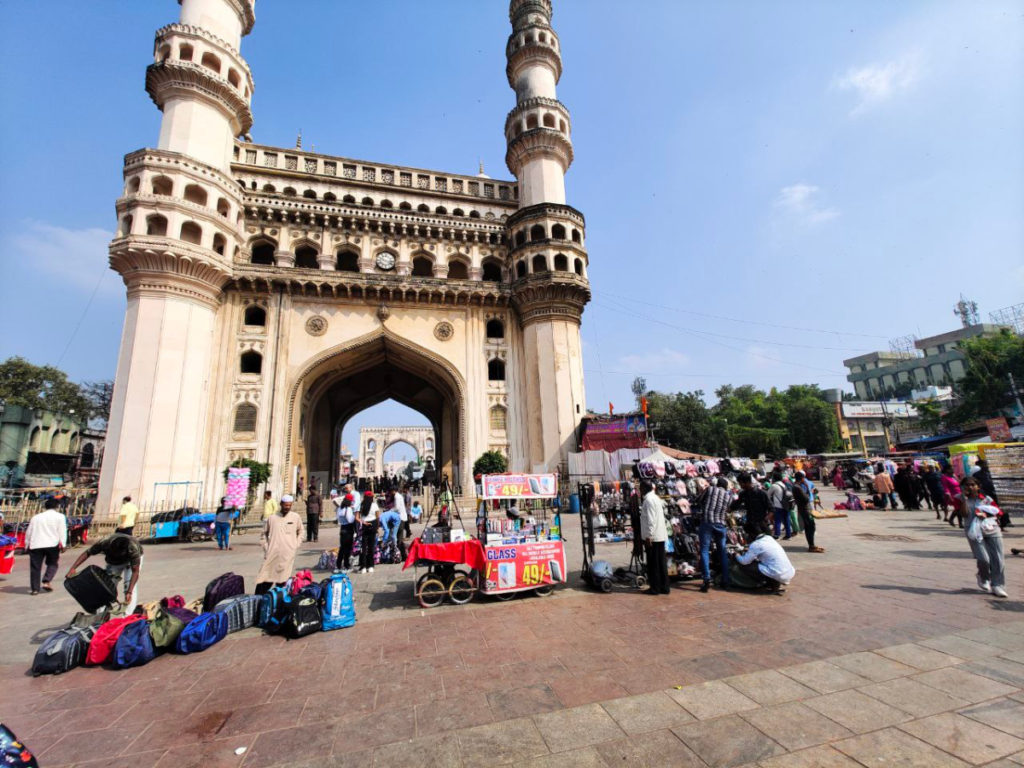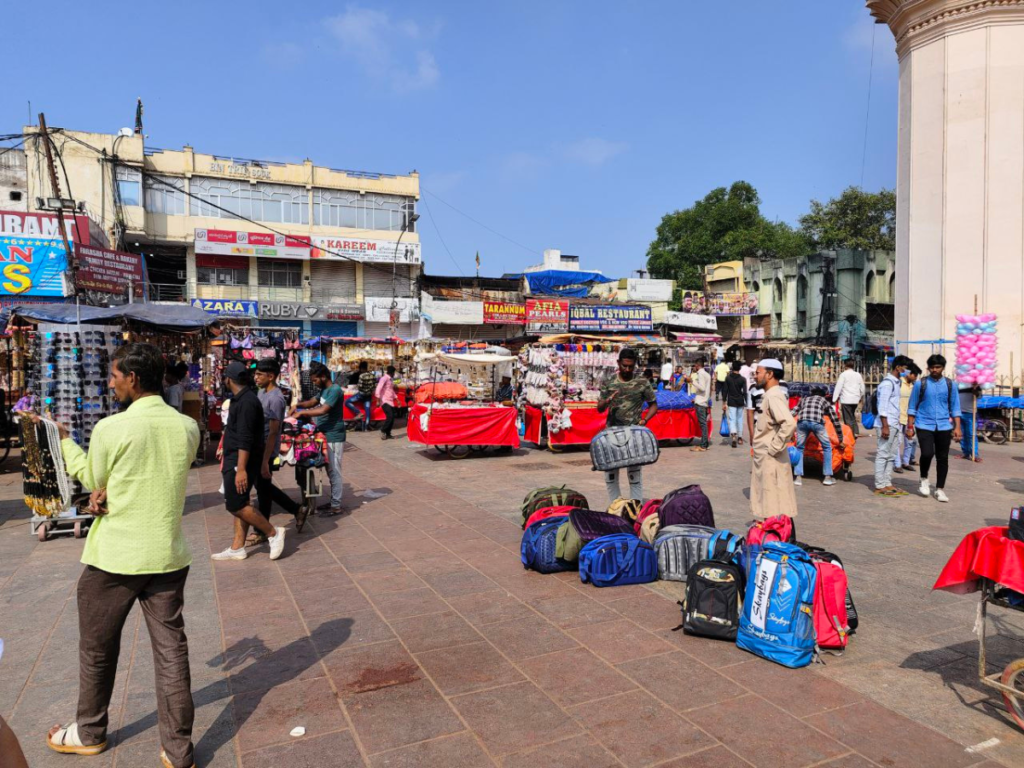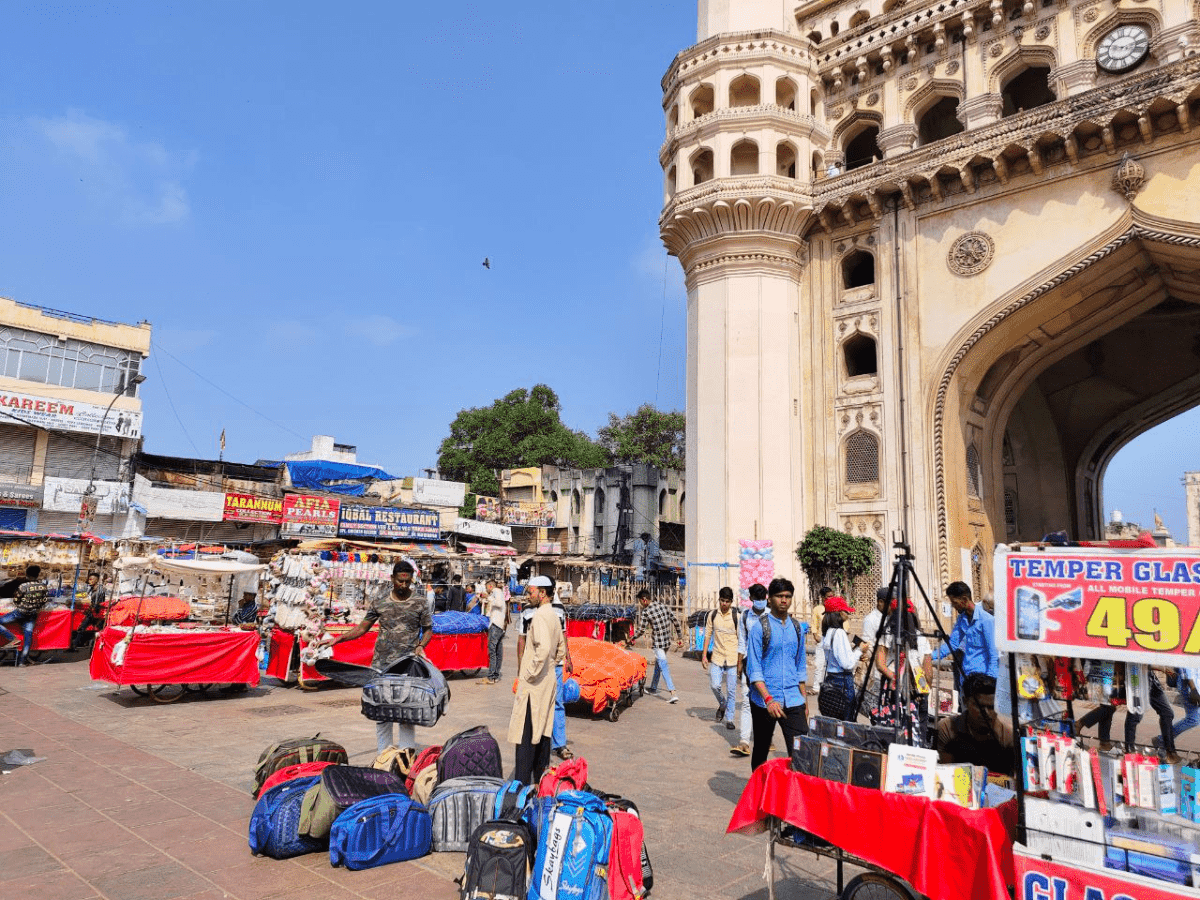Hyderabad: When Mohd Quli Qutb Shah founded our city in 1591, it was designed with grand edifices and fueled by global trade. The city’s centrepiece undoubtedly was the Charminar, built as the foundational monument. One can’t even comprehend how it would have felt to be awestruck by its magnificence back then, given that even in its lacerated condition today the Charminar continues to overwhelm people with its grandiose designs.
We know for a fact that aside from the Charminar and other monuments that towered the new city of Hyderabad (built after Mohd Quli Qutb Shah decided to move out of the walled-city of Golconda), the main area or the Bazars were what attracted foreign merchants alike in the 16th and 17th centuries. A prime reason to build the new city was to also establish new shops or markets (especially for diamond trading) for the Golconda kingdom.
The kingdom of Golconda and Hyderabad after all were known for its wealth, crowned by its famed diamond markets.
Diamonds were historically mined in the Andhra region (then under the Golconda or Qutb Shahi empire), and were sold in the Golconda fort’s markets, and later in Hyderabad. Apart from Indian traders, Mohd Quli Qutb Shah’s Hyderabad drew Persian, Armenian, Portuguese and British traders. The French traveller Monsieur Thevenot in fact gives us a glimpse of what Hyderabad was like under its sixth king Sultan Abdullah Qutb Shah (1626-72).
An excerpt from his travelogue tells us what he thought of Hyderabad (which he called Bagnagar) then: “The gardens without the Town are the loveliest, and I shall only describe one of them, that is reckoned the pleasantest of the kingdom. At first, one enters into a great place called the first Garden; it is planted with Palms and Areca trees, so near to one another that the sun can hardly pierce through them.”
Hyderabad: Is the Bhagyalaxmi temple at Charminar expanding?

Once a global market
Thevenot intricately described how Hyderabad was the epicentre of trade, with merchants lined up in ‘Bagnagar’, as he called Hyderabad. He also wrote about how the city had a presence of foreigners, including the Portuguese and English men. His words are quite telling of how great the city and its environs were centuries ago.
“The Tradesmen of the Town, and those who cultivate the Land, are Natives of the Country. There are many Franks also in the Kingdome, but most of them are Portuguese who have fled for Crimes they have committed: However the English and Dutch have lately setled there, and the last make great profits,” wrote Thevenot.
Mohd Quli Qutb Shah must have been proud of what he built. Alas, today, his legacy, the crown of which is the Charminar, is a shadow of what it once was. Unauthorised constructions all around, an unauthorised Chilla and an unauthorised temple on the monument itself, have robbed the ornate structure of its sheen and glory. More importantly, in spite of being a globally renowned monument, the Charminar barely provides a clean and tourist-friendly milieu today. It is in essence a filthy experience for most parts, thanks to the unclean environs.
In fact, the failed Charminar Pedestrianisation Project (CPP) is telling of how difficult it is to engage and implement projects in the area. The problems are manifold: densely populated localities nearby, heavy traffic flow and most importantly hundreds of hawkers. While on the face of it all these sound like solvable issues, the reality is that the problem is in fact deeply both municipal and political, which no one can seem to address or change.
Except for the mornings until 10:30 am, till the hawkers come, there is barely space for visitors or tourists to walk up till the Charminar from the Gulzar Houz. Another major issue
Did the founder of Hyderabad really have a lover named Bhagmati?
Charminar Pedestrianisation Project (CPP)
According to a government order (from the erstwhile state of Andhra Pradesh), the Charminar Pedestrian Project was first initiated in 2006, with a total approved cost of Rs 35 crore. Since then it was revised. The project finally got a push when Telangana municipal administration and urban development minister KT Rama Rao (KTR) visited the Old City after the state’s formation (2014) and said the project would be expedited.
The Charminar Pedestrianisation Project (CPP) was originally meant to pave way for tourists and citizens alike to be able to move in the Charminar precinct on foot. While some visible infrastructure was installed, it was however a far cry from getting the work fully done. It took about a decade or so for the state government to finally prevent vehicles from entering the monument’s vicinity. However, that has turned the situation upside down.
When this happened (before the COVID-19 pandemic itself), many, especially heritage lovers, rejoiced. For a while initially hawkers and vendors around the Charminar were also asked to fall in line and they complied. However, eventually, especially after the lockdown in 2020, the entire stretch leading from Gulzar Houz to the Charminar and after was completely occupied by hawkers. That pretty much beat the whole point of pedestrianisation.
“I remember initially when they stopped vehicles from reaching the Charminar it felt great. But now, after 10 am in the morning there is barely space to even walk around. Vendors should also get space as they need to survive, but the monument’s health and its aesthetics are equally important. This matters a lot to foreign tourists,” said DS Shekhar, a resident of Secunderabad who went up the Charminar recently.
Jurisdiction is also another issue with the Charminar. While the monument itself is under the Archaeological Survey of India’s (ASI) ambit, anything else like civic works or beautification outside of it has to be done with the local municipality – the Greater Hyderabad Municipal Corporation of Hyderabad (GHMC) in this case. ASI officials are more or less helpless in dealing with hawkers, as the precinct is not under their control.

Post pedestrianisation challenges
It was after that the Charminar area was cordoned-off for vehicles and the area got pedestrianised. However, with hawkers fully occupying the place today, it has backfired on the purpose. Hawkers who did not want to be named, said that they are able to stay in the area due to political support locally. “Moreover, we pay a daily rent unofficially to a local strongman (pehelwan) and also the cops. It is also about our livelihood,” said Hakeem (name changed), a 25-year-old from UP who sells toys near the monument.
“Many hawkers are also non-locals, and some of them have three to four stalls. There should be also demarcation for them,” said activist SQ Masood, who resides in the Old City. ASI officials also expressed helplessness given that the vicinity is not in their control.
“Even the fence for the Charminar was installed by the GHMC and not us. We don’t have any authority when it comes to civic works. If the monument wins the UNESCO World Monument tag then at least we can clear the area, but for that it needs to be free of encroachments mainly. That is unlikely to happen any time soon,” remarked an ASI official.







